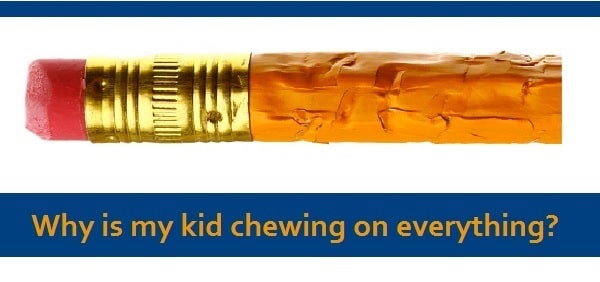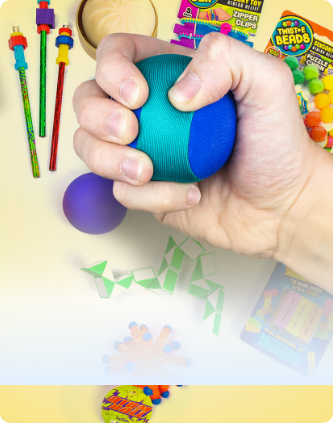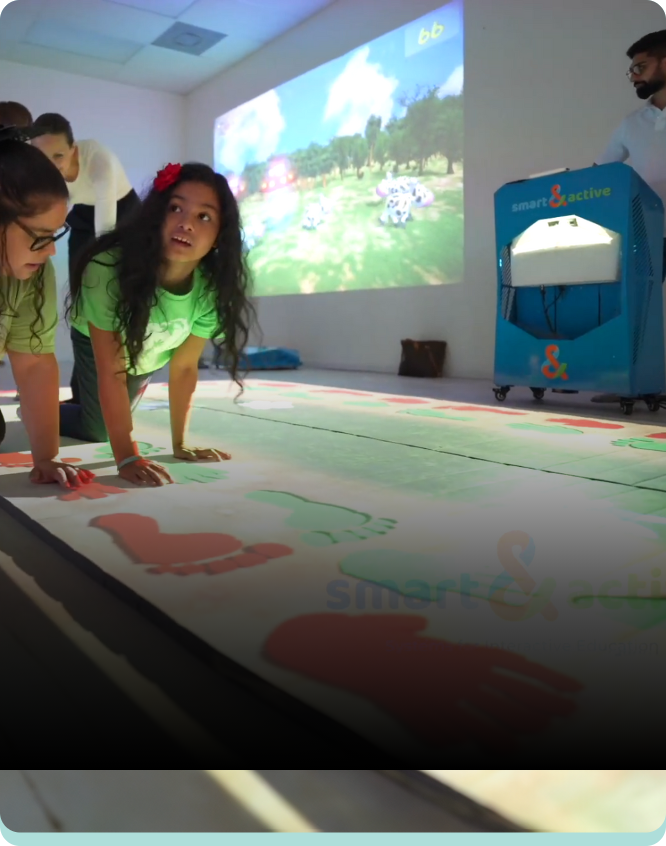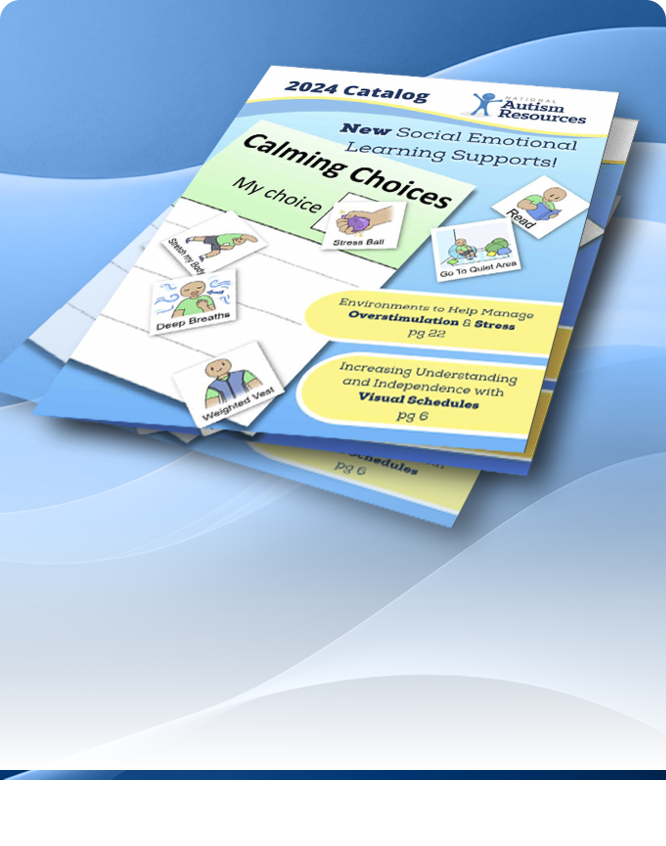Why do Some Kids Chew on their Clothes, Hair or Pencils?
Mar 7th 2023

Five Reasons Why Your Child May Be Chewing on Everything
Is your child chewing on their hair, clothes, or pencils? This behavior can be frustrating and expensive, especially when they start chewing holes in their clothing. Below are five reasons why your child may be chewing and ideas on how to help them.
1. Sensory needs:
The act of chewing on something provides calming sensory input for some children. It provides proprioceptive and oral sensory input, which can help to regulate the nervous system and provide a calming effect. Proprioceptive input is sensory information that comes from the muscles and joints, (in this case from the jaw). For some kids chewing on something can helps them feel grounded, focused, and organized.
2. Boredom:
Chewing can be a habit that a child develops to deal with boredom. If they don’t have anything to occupy their hands or mouth, they may chew on their hair or a pencil.
3. Calming
Some children might chew as a way to cope with anxiety. Chewing can be a self-soothing behavior that helps to reduce feelings of stress or nervousness. When a person is anxious, their body's stress response system can be activated, leading to physical symptoms such as muscle tension or restlessness. Chewing on something can help to reduce the physical tension and provide a sense of comfort.
Chewing can also be a form of distraction from anxious thoughts or feelings. By focusing on the physical sensation of chewing, a child may be redirecting their attention away from the source of their anxiety.
4. Oral Fixation:
Some children might have an oral fixation, which means they have a strong urge to put things in their mouth. They may seek pleasure through oral activities, such as eating, sucking, or chewing. Children who experience high levels of stress or anxiety may develop an oral fixation as a way to cope. Chewing on objects can be a self-soothing behavior that helps to reduce feelings of stress or nervousness.
It is important to note that an oral fixation can have negative consequences, such as dental problems or the ingestion of harmful substances, so it is important to redirect the behavior to safer alternatives. If the behavior persists and interferes with the child's daily life, it may be helpful to speak with a healthcare provider or a mental health professional.
5. Pica
Pica is a disorder characterized by a persistent need to chew and eat non-food items, such as hair, pencils, or paper. Pica is often associated with nutritional deficiencies, developmental disorders, or other underlying medical conditions.
If a child is showing signs of pica, it is important to speak with a healthcare provider to rule out any underlying medical conditions and determine the best course of treatment. Treatment may involve addressing any nutritional deficiencies or underlying conditions, as well as providing safe alternatives for the child to chew on. In some cases, behavioral therapy may also be helpful in addressing the behavior.
Note: it’s important to consider the child's age.
Chewing on non-food items is more common in younger children and may be a normal part of exploration and oral development. Babies and young children learn about their environment through their mouth in a process known as oral exploration. This is a normal part of development and typically starts in infancy, around 4 to 6 months of age. Babies at this age use their mouth to explore and learn about different textures, shapes, and tastes of objects they encounter.
As children grow and develop, they continue to use their mouth to explore their environment. Toddlers and young children may continue to put non-food objects in their mouth, such as toys, pencils, and other small objects, as they explore and learn about the world around them. This behavior is a normal part of development. By around the age of 2 or 3, most children begin to outgrow this phase of oral exploration, and the behavior typically decreases.
4 Ways to Help a Child Who is Chewing on Everything
If a child keeps chewing on their hair or pencils, there are several things that a parent or teacher can do:
1. Understand Why They are Chewing
Observe the behavior to see if you can see a pattern and what triggers the chewing. Pay attention to when the behavior occurs, where the behavior is occurring, what the child is chewing on, what happened just before the behavior started, and what was your reaction to the behavior.
2. Clearly Explain Healthy Options and Behavior Expectations
Clearly communicate to the child that chewing on hair or pencils is not a safe option for their body, can be destructive, or cause social problems. For students with language challenges one way you can communicate this clearly is through a simple social story.
Once you understand why the child is chewing you can write a short social story that explains the behavior, the problem with the behavior, and a positive solution. A sample social story could be:
Sometimes when I’m trying to focus in class I chew on my pencil. Small pieces of my pencil could break off and hurt my mouth or cause me to choke. Instead of chewing on my pencil I can wear a chew necklace and chew on that when I need to focus. When I use my chew necklace I can focus and keep my body safe.
3. Redirect the Behavior
To redirect the behavior you will need to provide the child with safe alternatives to chew on, such as chewable jewelry, a food safe straw, crunchy foods, or gum. This can help to satisfy the child’s need while avoiding the potential harm caused by chewing on a non-food item.
To help redirect the behavior you can create a card or picture as a visual reminder. This can be as simple as a picture of the chewable jewelry or a picture of a mouth. This is a discreet option for the classroom.
4. Reinforce Positive Behavior
It is important to celebrate positive behavior changes! When the child does chew on safe alternatives, provide positive reinforcement, such as praise or rewards, to encourage the behavior.
You may need to start with small increments of time. For example you could use a timer and a token board. If the child manages not to chew on their pencil for 30 minutes they can earn a token.
Involve a healthcare provider: If the behavior persists despite these interventions or is causing harm to the child's health, it may be helpful to speak with a healthcare provider or a mental health professional.
It is important to approach this behavior with empathy and understanding, as it may be a sign that the child is experiencing stress or sensory needs. By working together with the child and providing safe alternatives, you can help to redirect the behavior and support their child's well-being.







